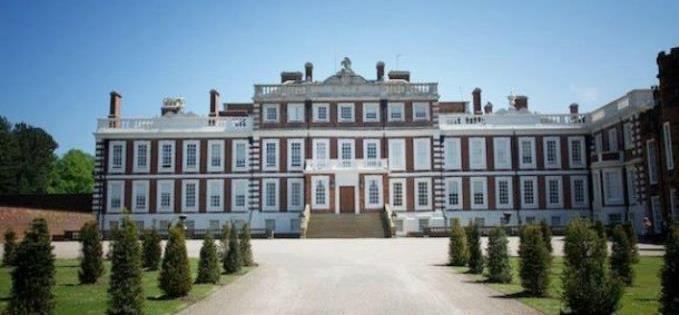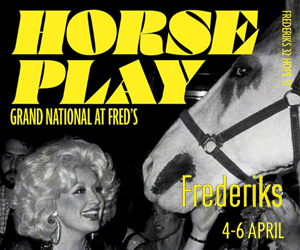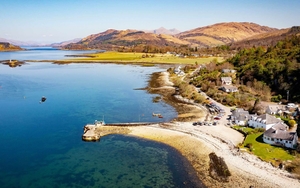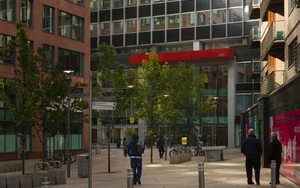THEATRE greats Vanessa Redgrave and Dame Helen Mirren are backing an £18m plan to re-create a "lost" Shakespeare theatre in Prescot, which could see the town become the "Stratford of the North".
Knowsley MP George Howarth said support for the ambitious project had also been supported by Sir Paul McCartney, Willy Russell, Alison Steadman, Sue Johnston and Phil Redmond.
A proposed £18m Shakespearean theatre could put Prescot on the world tourism map.
A debate in Parliament, generated by Howarth and St Helens South’s Marie Rimmer, heard that the Bard himself almost certainly supervised performances of his plays at the theatre, built on the edge of the Earl of Derby’s extensive deer park at Knowsley, four centuries ago. It is also thought he also performed in some of the plays.
Prescot was the site of the only freestanding purpose-built Elizabethan era playhouse outside of London during the 1590s. It was built by Richard Harrington, who was closely connected to William Stanley, the Earl of Derby, whose family home was at Knowsley Hall.
Shakespeare North Trust, which has the current Lord Derby, Edward Stanley as its President, is preparing to submit plans for the new Playhouse and education centre in Prescot, with work expected on building in 2017.
At a special debate in Westminster Hall George Howarth and Marie Rimmer
set out the potential benefits of the development to the local area.
At the centre of the Prescot Playhouse development would be a ‘cockpit’ theatre built to original 1629 plans by renowned architect of the day, Inigo Jones. It could become a major tourist attraction for the Liverpool City Region, bringing in visitors from across the world, creating jobs in Prescot and further afield, helping to create a night time economy and giving a significant boost to the local economy.
Globe
It would also include a university college for literary scholars, a range of educational, leisure and community facilities, and a cultural piazza for performance and events
Howarth said the aim was to create a “leading public theatre with a student programme at its core” that would “contribute to the economic regeneration of an area which has deep connections with one of the nation’s greatest cultural icons.”
He said the Playhouse would create a Shakespearean triangle with Prescot, Stratford and The Globe in London, and highlight Knowsley as a place where “people aspire to live, work and do business”.
The proposed site for the Playhouse is in Prescot Town Centre, on the existing Mill Street Car Park near to the 17th Century Grade I Listed St Mary’s church.
Knowsley Council leader Andy Moorhead, said: “A development like this would have a huge positive impact on our borough. Not only would it create jobs and provide a huge stimulus to the local economy, but it would make Knowsley a must-visit destination for visitors from across the country and around the world.
“Prescot and Knowsley have a fascinating history and a rich heritage. The Elizabethan theatre and William Shakespeare have been an important part of that. This new Playhouse could be the beginning of another exciting chapter in our local history.”
.
Where there's a Will there's a way: Shakespeare's Strange links with Knowsley
 Knowsley Hall, where Shakespeare is thought to have written, produced and performed
Knowsley Hall, where Shakespeare is thought to have written, produced and performed
In 1592, Shakespeare's first history play, Henry VI, was performed at the Rose Theatre in London. He was writing for a troupe of players called Strange’s Men, who took their name from their sponsor, Ferdinando Stanley, Lord Strange, who was to become the Fifth Earl of Derby.
When plague struck in the capital later that year, Strange’s Men fled north to the ancestral seat of their patron, Knowsley Hall.
The Stanleys – the greatest Elizabethan magnates in the North West – lived at the hall with the Playhouse, their local, and the first Elizebethan indoor theatre outside London, on the edge of its deer park at Prescot.
According to Bard historians, "the story of Shakespeare, Strange's Men and the Earls of Derby are interwoven from this point".
There is evidence that some of Shakespeare's plays, which contain tributes to the Stanleys, were first staged in Prescot or Knowsley Hall. Shakespeare would have almost certainly supervised the performances and may even have acted in them himself.
The Prescot plays included Richard III and Titus Andronicus for Strange’s Men and The Taming of the Shrew and Love’s Labour’s Lost to flatter his patron.
Later, he would write A Midsummer Night’s Dream to mark the wedding of the sixth Earl of Derby, William, to Elizabeth de Vere, in front of Queen Elizabeth I.
In Love’s Labour’s Lost, which is set in a deer park (similar to that at Knowsley Hall), King Ferdinando’s ambition, to make his court “the wonder of the world”, is likely to have been based on the real plans of Ferdinando Stanley.
Had he lived longer, Ferdinando Stanley would have been the leading English contender for the throne. Shakespeare almost certainly wrote his early plays while under the patronage of these powerful Lancastrian families.
More information about the proposals can be found at www.shakespearenorth.org















